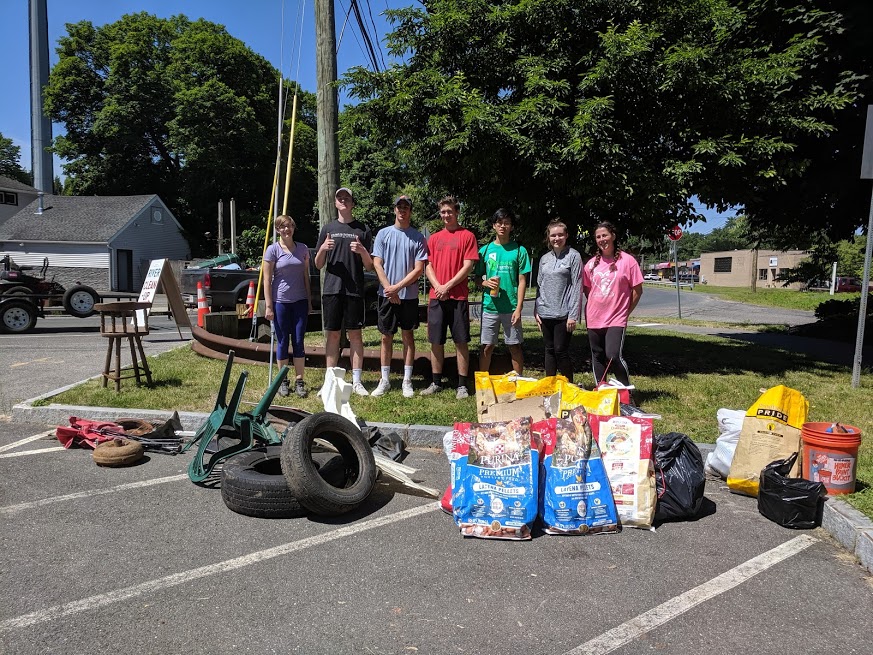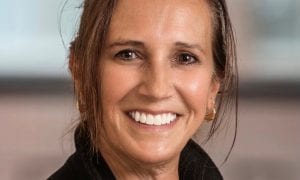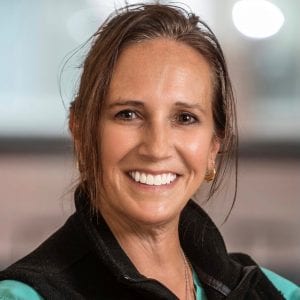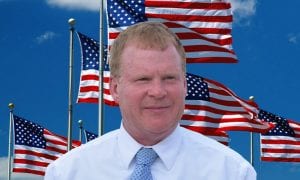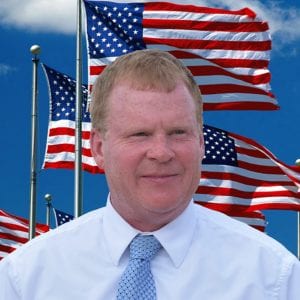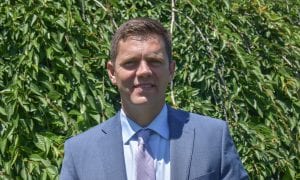WESTFIELD-The rivers that flow through our communities come under attack by individuals who choose to pollute them, and each spring and fall, a call is sent out by the Westfield River Watershed Association for volunteers to spend a few hours extracting the debris that needs to be purged from the riverbanks.
The Source-to-Sea Cleanup, conducted in conjunction with the Connecticut River Conservancy, will be observed Sept. 28 in Westfield and on Oct. 5 in Agawam. Mark Damon, first vice president, Westfield River Watershed Association (WRWA), will lead the Westfield volunteers and Sheryl Becker, a WRWA director, will oversee the Agawam efforts. Nancy Bobskill, a retired Agawam High School environmental science teacher, will also assist Becker and the volunteers.
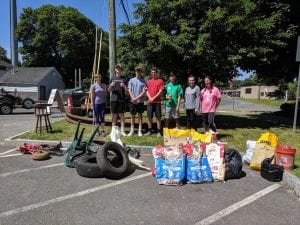
Agawam High School students were among the volunteers who pitched in this spring to help clean up the local river systems. This fall, another river cleanup is slated in Agawam and Westfield. (Submitted photo)
“The cleanups are important partially because they actually remove some potentially dangerous pollutants,” said Damon, noting that plastics are being identified as more of a hazard. “As they break down into very small pieces, they can enter the body of humans or other animal species, where some of them may act like hormones, or they may act as surfaces for other pollutants to adhere.”
Becker shared a similar sentiment.
“The cleanup is important to me because I am passionate about keeping our ecosystem healthy and clean,” said Becker. “Rivers are our main source of clean drinking water, and their economic value, environmental value, and even aesthetic and spiritual values are an essence of my being.”
In the spring, Damon said there were 28 volunteers, including several Westfield State University students, who covered six sites on the Westfield and Little rivers. The teams collected 42 bags of trash, four tires, and various items including a folding crib and house siding.
“Tires are a source of oil pollution,” said Damon. “Some pollution can introduce bacteria – one of the things we occasionally find are used diapers. We also find motor oil cans and paint cans, and antifreeze bottles.”
Damon stressed that the physical presence of trash interferes with water flow and habitat used by wildlife.
“One other beneficial result of cleaning up the river is that people are less likely to consider it acceptable to dump things if there isn’t already trash in it, so it discourages further dumping,” he said.
Becker noted that the spring cleanup in Agawam had been cancelled on the original date due to an “extremely high” water level at Pynchon Point.
“We had a little cleanup a few weeks later in which some students from Agawam High School’s SAVE (Students Against Violating the Environment) Club and National Honor Society collected 15 bags of trash, three tires, two chairs, and a car part,” said Becker.
Becker added that in previous years volunteers had collected more trash.
“Due to the high water, much of the trash was underwater,” said Becker, adding, “we usually get much more trash.”
Becker explained that Agawam, “especially Pynchon Point,” is a pivotal spot for river cleanups because it is the confluence of the Westfield and Connecticut rivers.
“Trash coming from the Westfield River and tributaries flow into the Connecticut River at that spot,” said Becker. “Pynchon Point and the Connecticut River bank below the Riverwalk is where many people fish and recreate, so there is often a lot of trash in that area.”
Becker said “at least” 15 volunteers are needed at every cleanup in Agawam.
“Of course, the more we get the more we can clean, assuming the water level isn’t too high,” she said.
Volunteers are needed to pick up trash, both small and large, and separate recyclables.
“We often have very heavy bulk items that need to be lugged up the bank, so muscular volunteers are especially appreciated,” she added.
In Westfield, Damon is seeking 30 to 35 volunteers but more are always welcome.
“Volunteers should show up by 9 a.m., and they will form groups of three to four people, who will get bags and gloves,” said Damon. “Each group will be assigned an area to cover, and given a handout with directions and a few safety precautions.”
Volunteers will go to the assigned site, bag up the materials, total up what they’ve collected, and leave the bags and other items in the area for pickup by the state or city.
“Volunteers should dress in clothes that can get dirty and wet,” said Damon.
For more information on WRWA’s 9 a.m. – 1 p.m. cleanups, visit www.westfieldriver.org.
“The cleanups are important for their value in getting people out and involved, seeing the river and appreciating its beauty and biodiversity, and developing a sense of emotional investment in the environment,” said Damon, adding, “We protect what we love and feel connected to.”
Becker concurred.
“Rivers are a key component of our ecosystem and unfortunately without volunteer cleanups they would not be nearly as clean as they are now,” she said.

